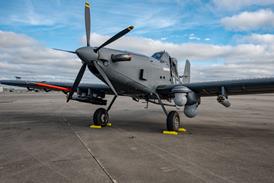COMMERCIAL JET HULL-loss accident rates are increasing, according to Boeing's chief of systems engineering, Earl Weener. If the trends are sustained, the number of hull losses per million departures will be higher than it was 20 years ago, Weener told a Flight Safety Foundation seminar in Seattle on 6-9 November.
The Boeing study also indicates that the disparity in standards in the world's safest regions and the remainder of the world is tending to increase, at a time when the air-transport industry's fastest growth is often in areas where safety figures are poorest.
Although the hull-loss-rate trend seen over the last 20 years is gently downward, the movement for the last five and ten years, respectively, show an increasingly steep upward gradient. The results show a hull-loss rate of 1.6 per million departures in 1974, against an estimated 1995 figure of between 1.75 and 1.8 per million, says the report.
Weener also produced figures, which show that jet airliners in current production are more than three times as safe as out-of-production (OOP) models still in service. The figures, giving the average number of departures achieved between hull losses during the last ten years, show, however, that age and obsolete technology represent only one factor in the safety equation. Using the USA as a benchmark, he uses comparisons between US and non-US performance:
On average in the USA, there were 1.493 million OOP aircraft takes-off before one of them was written off in an accident, whereas the rest of the world saw an OOP jet airliner written off in an accident every 289,000 departures.
Although modern aircraft have helped bring a significant improvement in safety everywhere, according to this particular statistical measure, the USA has increased its safety by a factor of nearly seven, against the non-US world's safety improvement of only 3.5 by operating modern jets.
There are more than 10 million US in-production airliner departures between hull-write-off accidents, whereas the rest of the world achieves just under 1 million departures between write-offs.
Source: Flight International























